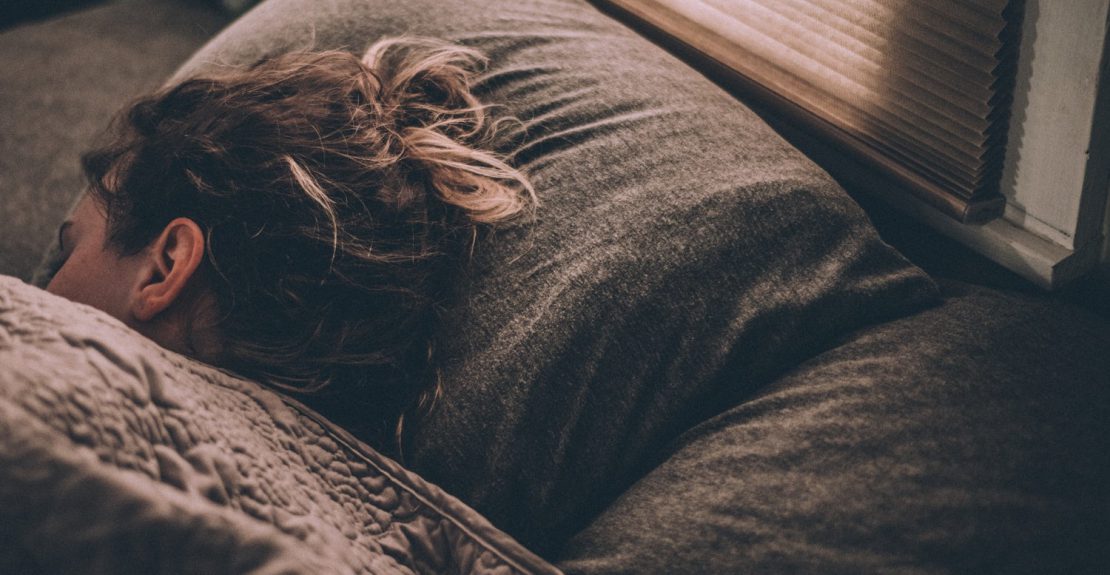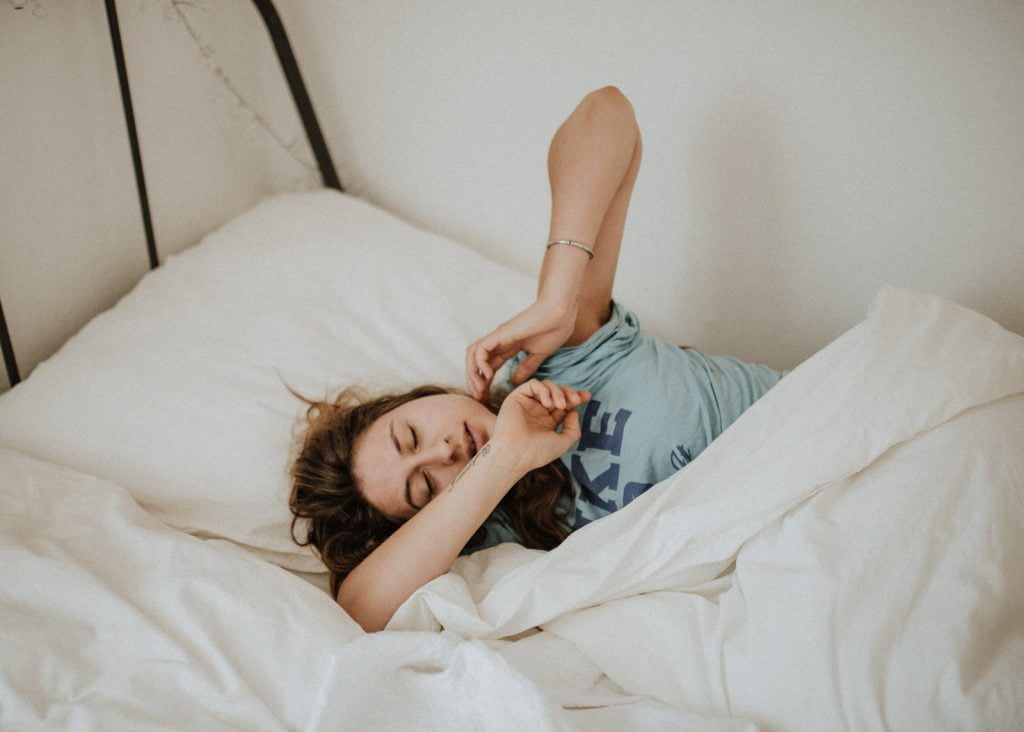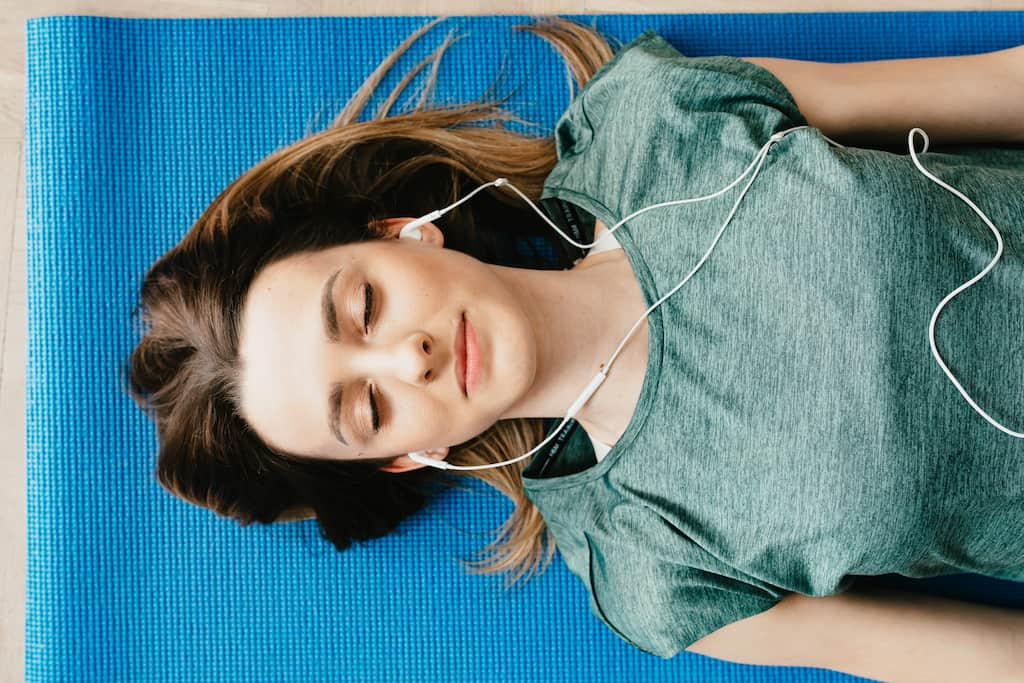Falling Asleep Made Easy with Yogic Tips

Contents
Last night I tossed and turned and barely slept! I hadn’t changed my daily routine at all. I’m a long-time night owl and I’ve had sleep problems since I was a child. In the last couple of years, I can say that I’ve made some progress in solving this problem, but sometimes I have nights like last night. Now, I practice yoga and meditation regularly, and I teach both as well. No matter how sensitive you’ve become towards your body, even if you don’t experience any physical or psychological disorders, and even if you have an organized life, you may experience sleepless nights at times.

Why am I having trouble sleeping at night?
First of all, let’s go over an issue that is probably familiar to all of us: You’re supposed to be asleep, but your thoughts and mind are very determined to keep you awake. You might be writing down a list in your mind, one by one, of the points you’ll say in next week’s meeting, you might be planning what you’re going to cook tomorrow or which part of the house you’ll clean. Or maybe an old conversation keeps turning in your head.
The good news is: You’re not alone! Because of the increasing pressure of daily life and our level of exposure to screens, many people experience this in modern life. Irregular sleep is an inevitable result of social and economic pressure and our disconnection from nature. We might be experiencing increased levels of anxiety about our health, our loved ones, economic concerns, or the uncertainty of the future. As a result, our brain is telling our body that we’re facing a life-threatening situation. This results in physiological reactions that cause our body to stay stimulated. This is also probably why the frequency of sleep issues seems to have increased during the worldwide pandemic.
In this article, I’ll talk about a few techniques based on my own experience of teaching and practicing yoga. These techniques can help you address sleep problems step by step.
Be aware of the reasons for sleep deprivation
The first important point when it comes to these practices is that we should be aware of the possible reasons behind our sleep issues. We should try to address these problems patiently and without pushing ourselves too hard. Moreover, we should definitely switch off before we go to sleep. If you want to read more about how blue light from our devices affects our sleep, you can check out this piece. Secondly, we shouldn’t expect magical or instant results from any of these techniques. Instead, we should focus on making them part of a routine. Remember that it’s important to form a habit by being both consistent and persistent. Here is an example of a possible pre-sleep routine that might be useful for you:
Yogic Tips

1. Staying mindful
If you already practice mindfulness regularly during other parts of your day, you can also include a mindfulness meditation or any other form of meditation that is suitable for pre-sleep. However, in order to make this routine sustainable for yourself long-term, my advice is to have a five-minute mindfulness session after you’re done with all your activities and you’ve put your phone down. Observe your breathing and your body in a room and posture that makes you feel comfortable. This can be done sitting on the floor or lying down in bed. Observe your physical environment and the sensations in your body. If possible, there should be no light or sound. During the exercises I describe below, your awareness should be on your breathing and the parts of your body that are changing along with your breath.
2. Bending forward
All the poses in which we bend forward are ideal for calming our mind and body and for getting prepared for sleep. While on the floor or in your bed, rest your upper body on your legs for a few minutes. Don’t push yourself to stretch too deeply if you feel stiff — this should be a relaxing pose. While doing this pose, you should bend forward from your hips. You can put a pillow or folded blanket between your legs and stomach to soften the pose. You can also put the soles of your feet together and drop your knees to the sides. If you do this, you can adjust the pillows and the distance between your feet.
Another pose that is perfect for getting ready for sleep is child’s pose. For this pose, sit down in bed or on the floor with your feet under you and fold your torso over your legs so that your hips are over your heels. If needed, adjust the pose by putting pillows or blankets under your stomach. Your arms can stay next to your heels or you can lay them in front of you.
3. Twists
Twists are ideal pre-sleep poses in terms of relaxing the body along the spine. To do this pose, lay down and then fold your knees and legs up towards your belly. Then wrap your arms around your knees and let your knees drop together to the ground, either on your right or left side. Then open your arms in a T shape and turn your upper body to face away from your knees, keeping your shoulders on the ground. You can do this pose on alternating sides for a few minutes.
4. Viparita Karani Pose
This yoga pose is said to be the “remedy for everything.” When it comes to sleep issues, it may help in relieving physical stress and tension that has accumulated due to standing up or sitting down all day. While lying down in bed, put your legs against the wall. The key here is that your hips should touch the wall. You can also raise your hips with pillows and blankets. If you are using support under your hips like a blanket, it should create space between your body and the floor or bed. Your arms can rest at your sides. Enjoy this relaxing pose for a couple of minutes.

5. Nadi Shodana Breathing Exercise
For this calming breathing exercise, fold the index and middle fingers of your dominant hand together and put them against your palm. Using your right thumb, close your right nostril and inhale from the other one. Then close the left nostril with your ring and pinky finger and exhale from the right one. Now, inhale again with the same nostril that you just exhaled from, without moving your hand. You should change your hand after you inhale and exhale once per nostril. You can repeat this sequence ten times. If you can’t breathe through one of your nostrils, you can try pulling your cheek softly with your other hand. While this exercise helps with allergies and colds, you can also practice it for meditation.
One last extra note: Burning incense with a strong scent before we go to sleep may affect our breathing quality. However, a few hours before we go to bed, we can use relaxing essential oils in a censer or incense burner, or we can apply massage oils or lotions. Don’t forget to ventilate the room!
After trying this sequence, you can change the order of the exercises however you wish. Do you have your own pre-sleep routine or any techniques that help you fall asleep? We would love to hear from you if you practice this routine or if you have any pointers of your own! Please share with us in the comments.
Translated by: Damla Saydam Çizme


